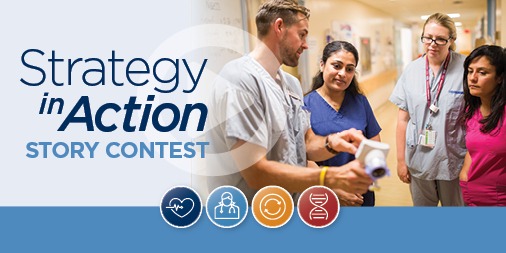
Optimizing patient flow to improve outcomes
Patient flow is a complex, behind-the-scenes dance that happens at hospitals.
You need the right people, in the right place, at the right time. For patient flow to function best, patients need to be placed with the most appropriate clinical team in the most appropriate area of the hospital. This improves efficiency and ensures patients get the expert care they need.
Optimizing patient flow
A project at Hamilton General Hospital and Juravinski Hospital and Cancer Centre is looking at how we can do this better, focusing on general internal medicine (GIM) patients. GIM patients commonly include people with pneumonia, diabetes, heart issues, and chronic obstructive pulmonary disorder (COPD) to name a few. It is the largest group of adult patients at Hamilton Health Sciences (HHS).
When admitted through the emergency department, patients are assigned to a doctor, and a room. Each doctor works on a specific team, and that team of doctors and staff is assigned a location within the hospital. The crux of the project is simple: place patients assigned to the same doctor in the same area of the hospital. The intent of geographically locating patients based on their care team is to enable better communication between staff, patients, and families, and to reduce the number of clinical units doctors must visit each day to see their patients. But in a large system with many factors at play, this is a highly complex undertaking.
Many steps on the way to success
To tackle such a challenging task, the GIM group and clinical teams started by taking stock of current processes across all the different units where they care for patients. This gave them a better sense of what needed to change, and established a baseline so they could track their results.
They’ve updated their procedures to make it easier for each doctor’s patients to be grouped together, using strategies like standardized communication rounds. Grouping each team’s patients together more consistently results in a number of benefits. It creates opportunities for impromptu discussions among care teams, and makes families more comfortable approaching doctors with questions. It also improves learning for medical students and residents, since they have more opportunities to communicate with families and colleagues.
The project is still in early stages. The team is tracking several different measurements to gauge success, including percentage of patients grouped together, length of patient stay, and patient and staff satisfaction.
 This story was selected as a winner in our Strategy in Action contest, which asks teams across Hamilton Health Sciences to share how they are putting our strategy into practice.
This story was selected as a winner in our Strategy in Action contest, which asks teams across Hamilton Health Sciences to share how they are putting our strategy into practice.
This initiative supports Operational Excellence, one of four strategic directions identified in Hamilton Health Sciences’ Strategic Plan. Operational Excellence is about aligning strategy, systems, tools, and culture to continuously improve value for patients and families.
